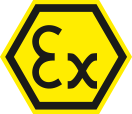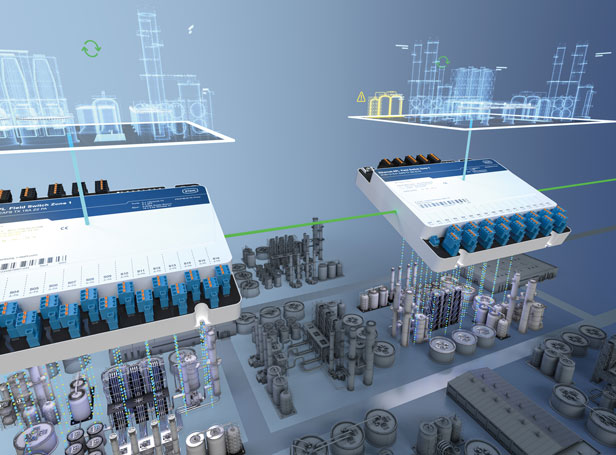In industrial environments, the choice of the right systems for the respective ambient conditions is crucial. In this context, terms such as rugged, outdoor, protected outdoor and indoor frequently pop up – but what exactly do they mean?
Many companies are unsure of this, and exact definitions and examples will help choosing the right device platform and avoiding costly mistakes.
1. The importance of a clear distinction
Industrial systems are complex and highly automated. Whether in the oil and gas production, in the pharmaceutical industry or in chemical plants, operating stations must run reliably at all times – often 24 hours a day, 365 days per year.
In contrast to office environments, the ambient conditions here are extreme:
- Temperature ranges from -40°C up to +65°C
- Humidity and rain, sometimes even high-pressure cleaning
- Salt spray near coasts or onboard ships
- Dust and dirt in refineries or at loading areas
- Corrosive gases that can even damage stainless steel
- Mechanical strain due to vibration or shocks close to machinery
- Clean room conditions in the pharmaceutical, biotech and food industries
No single device can meet all these requirements. Manufacturers such as R. STAHL therefore clearly differentiate their platforms on the basis of areas of application.
2. Four categories – an overview
Rugged – for the harshest conditions
Rugged stands for robust, hard-wearing and long-life Devices in this category have been designed to withstand even the harshest conditions.
- Areas of application: offshore platforms, oil & gas industry, LNG ships, chemical industry
- Features:
- Temperature range: -40 °C to +65 °C
- Degree of protection: IP66 (dust-tight and powerful water jet proof)
- High resistance to vibration and shocks (acc. to MIL-STD-810H)
- Displays with extreme brightness (up to 1200 cd/m²), readable even in direct sunlight
- Materials such as aluminium and glass instead of plastic -> UV and corrosion resistant
Example: The SHARK Rugged HMI is certified for marine application and is resistant to salt spray and strong vibrations on drilling ships.
Outdoor – full exposure to weather
Outdoor HMIs are designed for direct installation outdoors. They must be resistant to heat, cold, rain and sun.
- Areas of application: ports, refineries, energy facilities
- Features:
- Degree of protection: at least IP66 or NEMA 3X/4X
- High display brightness (≥ 1000 cd/m²)
- UV-resistant materials
- Temperature ranges from -20 °C up to +55 °C / 65 °C
Protected Outdoor – the solution for in-between cases
Many industrial applications lie somewhere between indoor and outdoor: For example, devices are installed outdoors but are protected from direct weather impact by roofs or enclosures .
- Areas of application: petrol stations, loading areas, covered outdoor terminals
- Features:
- Temperature range: -20 °C to +55 °C
- Protected against splashing water and dust
- Cost less than rugged solutions because not fully exposed to weather
Indoor – protected and controlled environment
Indoor devices are designed for application in safe, air-conditioned environments. However, they sometimes also have to meet particular requirements, such as GMP or clean room requirements.
- Areas of application: Indoor production areas and also control rooms, foreman's offices
- Features:
- Temperature range: 0 °C to +40 °C
- Degree of protection: IP20 to IP65 (IP66 for certain hygiene requirements)
- No need for high display brightness
- Cost less than outdoor or rugged systems
- Frequently subject to clean room requirements according to GMP
3. Technical differences in short
- Temperature ranges: from 0-40 °C (indoor) to -40-65 °C (rugged)
- Display brightness: from 350 cd/m² (indoor) to 1200 cd/m² (outdoor / rugged)
- Degrees of protection: from IP20 (indoor) to IP66/NEMA 4X (outdoor / rugged)
- Vibration and shock: fully tested only for rugged devices
4. Conclusion
There is a clear distinction between the four categories:
- Indoor: for safe, controlled environments
- Protected outdoor: for partly protected outdoor areas
- Outdoor: full exposure to weather
- Rugged: for the harshest, most extreme environments
This categorisation enables customers to make a technically appropriate and economically prudent choice.
These articles might also interest you







![[Translate to Englisch:] [Translate to Englisch:]](/fileadmin/user_upload/mitarbeiter/01_DE/07_Blog/00_Allgemein/blog-explosionsschutz-rstahl-startseite-279x205.jpg)
![[Translate to Englisch:] [Translate to Englisch:]](/fileadmin/user_upload/mitarbeiter/01_DE/07_Blog/00_Allgemein/blog-explosionsschutz-rstahl-ueber-den-blog-279x205.jpg)
![[Translate to Englisch:] [Translate to Englisch:]](/fileadmin/user_upload/mitarbeiter/01_DE/07_Blog/00_Allgemein/blog-explosionsschutz-rstahl-autoren-279x205.jpg)
![[Translate to Englisch:] [Translate to Englisch:]](/fileadmin/user_upload/mitarbeiter/01_DE/07_Blog/00_Allgemein/blog-explosionsschutz-rstahl-newsletter-expert-mail-279x205.jpg)
Write new comment